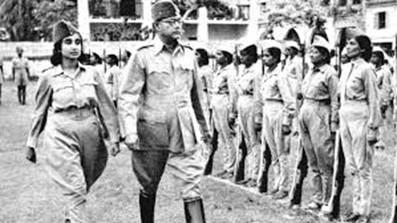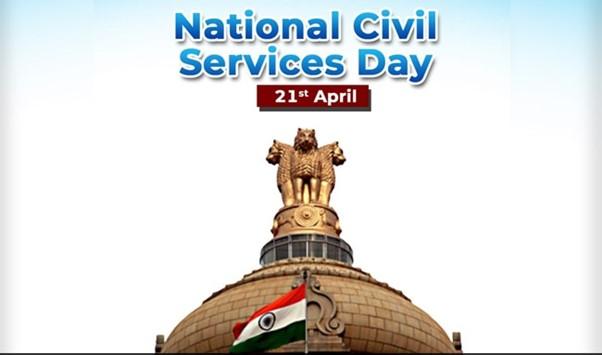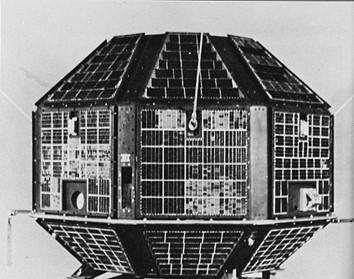Friday, 23rd April 2021
Khongjom Day
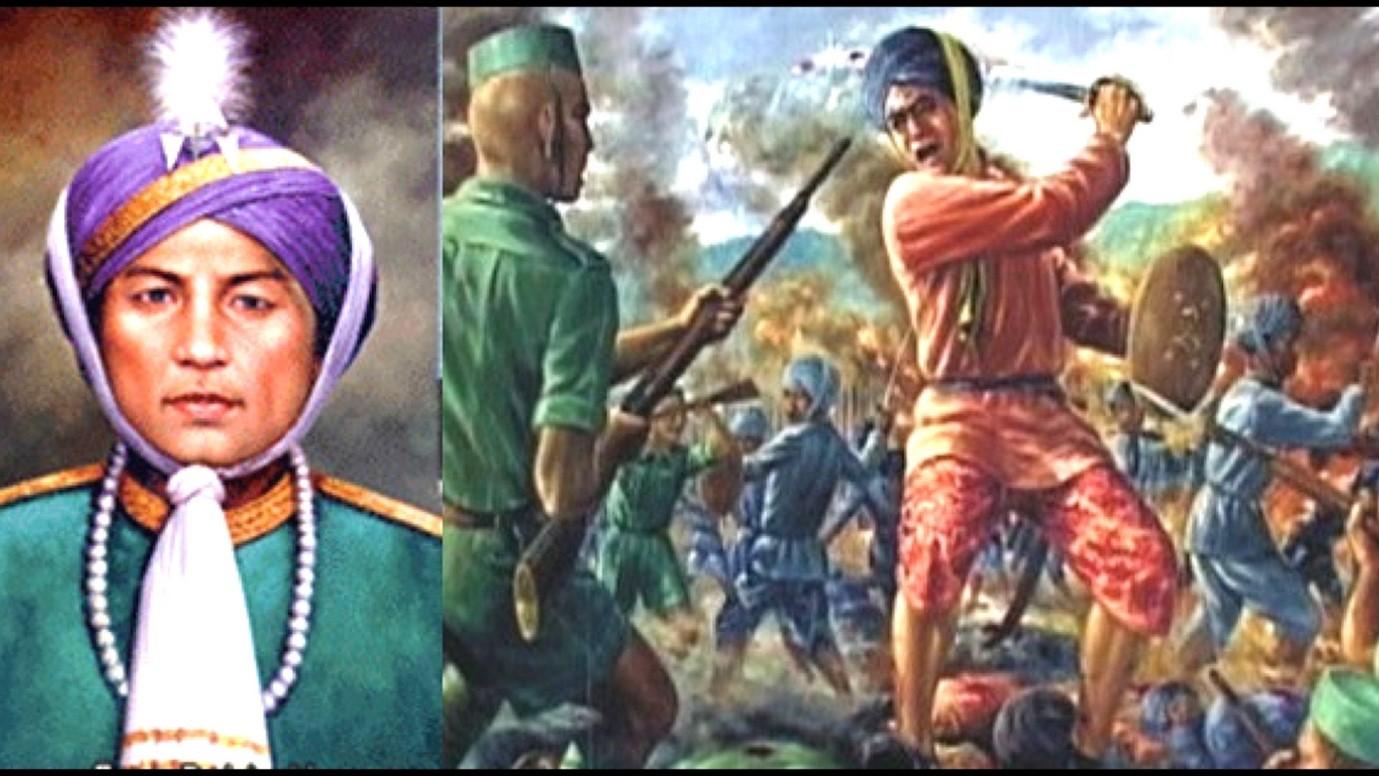
Khongjom Day is annually observed on April 23 as a state event to commemorate and pay tribute to the war heroes of Anglo-Manipuri war of 1891. Lack of unity among the ruling princes and the British interference in the affairs of the state were the key factors of the war. Killing of five British officers including Mr. James Wallace Quinton, the chief commissioner of Assam was the immediate cause of the war. The war was fought in the Kheba hills of Khongjom in Manipur. Majors Paona and Chongtha Miya were important leaders of the war.
India elected by acclamation to 3 bodies of UN Economic and Social Council
In News
India has been elected by acclamation to three bodies of the UN Economic and Social Council. The three bodies include the Commission on Crime Prevention and Criminal Justice, Executive Body of the UN Entity for Gender Equality and Empowerment of Women and the Executive Board of the World Food Programme. India’s term to these bodies begins on January 1, 2022.
What is election by acclamation in the United Nations?
- An acclamation is a form of election that does not use a ballot.
- When a member with a clean slate is presented for an election in the United Nations, the vote takes place through acclamation. Clean Slate means there is no history of evidence of any problems or broken rules. The Secret ballot shall be dispensed when election by acclamation takes place in the United Nations.
- Election by Acclamation is not allowed in all UN bodies, for eg Human Rights Council.
|
Body |
Mandate |
|
Commission on Crime Prevention and Criminal Justice |
· It serves as the primary organ that guides the activities of the United Nations in the fields of crime prevention and criminal justice. · The commission comprises 40 member states elected by the Economic and Social Council distributed amongst the various regional groups: 12 for African states, 9 for Asian states, 8 for Latin American and Caribbean states, 4 for Eastern European states and 7 for Western European and other states. Members are elected in overlapping three-year terms. |
|
United Nations Entity for Gender Equality and the Empowerment of Women |
· UN Women's main thematic areas of work include political participation, economic empowerment, ending violence against women, peace and security, governance and national planning as well as the 2030 agenda for Sustainable Development. · The Executive Body comprises members from Africa, Asia Pacific, Eastern Europe, Latin America and the Caribbean, Western Europe and Contributing countries. |
|
World Food Programme |
· WFP is the food-assistance branch of the United Nations. It is the world's largest humanitarian organization, the largest one focused on hunger and food security. · WFP offers technical assistance and development aid, such as building capacity for emergency preparedness and response, managing supply chains and logistics, promoting social safety programs, and strengthening resilience against climate change. · WFP is governed by an executive board which consists of representatives from 36-member states, and provides intergovernmental support, direction and supervision of WFP's activities. The European Union is a permanent observer in WFP |
Sources:
Indian ads further gender stereotypes, shows study
In News
The study titled “Gender Bias and Inclusion in Advertising in India” was released by UNICEF and the Geena Davis Institute on Gender in Media.
Key Findings in the study
- Traditional roles for Women: Female characters are plentiful in Indian advertising, but mostly in ways that uphold traditional gender roles for women. For instance, almost all the detergent and food commercials depicted a woman caretaking for her family who speaks directly to women viewers about caring for their families. According to the findings, women are less likely to be shown in public spaces, in paid employment, as leaders or making decisions about their futures.
- Absence of important issues confronting women: There was little representation of child marriage, or violence against in women in ads included in the study. This is a key issue in Indian society and considering COVID -19’s disproportionately negative impact on women in terms of loss of employment and increases in domestic violence.
- Stereotyping body types: In terms of healthy bodies, female characters are invariably thin but male characters appear with a variety of body sizes in Indian advertising. This reinforces the idea that girls and women are supposed to take up less space physically and figuratively.
- Skin colour bias: The findings of the study show colorism is starkly reflected in Indian advertising in ways that reinforce discriminatory social arrangements. Advertising presents characters with lighter skin as more physically attractive than characters with darker skin.
Way Ahead
- Ensuring diversity in representation of women: To contribute to a society that values diversity and inclusion, advertising could show a more diverse range of skin colours and tones, especially among women and girls shown in advertising to ensure children see representation across skin types and social class.
- Raise awareness on sanitation and hygiene roles: There is also a need for more advertisements promoting menstrual health and busting taboo around the issue.
- Positive gender norms around the body: Advertising can show women and girls across a variety of body shapes, in line with men, leading to a healthier outlook around body shape. By increasing the proportion of women and girls found in sporting settings, there is the opportunity to increase participation of girls in sports and promotion of healthy, strong bodies for girls and boys.
- Representation of women in leadership: Increased representation of women working, making decisions and as successful leaders can inspire girls to stay in school and help demonstrate different templates of women working both inside and outside their homes.
Sources
India Renewables Dashboard
In News
The Central Electricity Authority (CEA) and CEEW's Centre for Energy Finance (CEEW-CEF) on Wednesday launched the India Renewables Dashboard.
About the News
- Organizations involved: The dashboard is a joint effort to provide detailed operational information on renewable energy (RE) projects in India.
- The dashboard has been supported by the Shakti Sustainable Energy Foundation.
- Data Collection: The dashboard captures daily generation data at the state, regional and national levels for the aggregate 93 gigawatts (GW) of installed RE capacity in India.
- It also captures this data at a plant level for a subset of projects.
- Information Availability: Information on dashboard is freely available to policymakers, developers, financiers, and the public.
- The India Renewables Dashboard addresses the challenge, of manual aggregation of data and non- accessibility, by automating the process of updating daily RE generation.
- Users can download the data in multiple formats and conduct their own bespoke analyses. This will allow them to gain valuable insights for improving project implementation, infrastructure planning and power generation forecasting in the renewables sector.

Significance
- India’s RE target: With more than 90GW of installed Renewable Energy (RE) capacity - primarily solar & wind, RE’s share in India’s electricity mix is on an upswing.
- Thus, data will play a critical role in further accelerating the pace of RE project deployment, infrastructure planning, and efficient forecasting of power generation.
- Accessibility of data also becomes crucial to meet India’s target of 450GW of installed RE capacity by 2030.
- CO2 Emissions: The India Renewables Dashboard not only tracks data on RE generation but also quantifies the mitigation of CO2 emissions achieved as a result.
- Human error: It has also automated the creation and publication of key reports by CEA’s Renewable Energy Monitoring division, reducing the possibility of human error.
Source: https://www.renewablesindia.in/
NASA’s Perseverance mission produces oxygen on Mars
In News
NASA announced that a device aboard the Perseverance rover was able to produce oxygen from the thin Martian atmosphere for the first time.
About the News
- The Mars Oxygen In-Situ Resource Utilization Experiment (MOXIE) produced 5 grams of oxygen from carbon dioxide in the Martian atmosphere, enough for an astronaut to breathe for 10 minutes.
- Like a tree on Earth, MOXIE inhales carbon dioxide and exhales oxygen.
- Carbon dioxide makes up ~96% of the gas in Mar’s atmosphere and oxygen is only 13%.
- Procedure: To produce oxygen, MOXIE separates oxygen atoms from carbon dioxide molecules. It does so by using heat at a temperature of around 800 degrees Celsius, and in the process also produces carbon monoxide as a waste product, which it releases in the Martian atmosphere.
- MOXIE: A technology demonstrator, MOXIE is designed to generate up to 10 grams of oxygen per hour, and is placed inside the Perseverance It is the size of a car battery, weighing 37.7 pounds (17.1 kg) on Earth, but just 14.14 pounds (6.41 kg) on Mars.
Significance of the event
- For four astronauts to take off from Mars, a future mission would require around 7 metric tons of rocket fuel and 25 metric tons of oxygen, around the weight of an entire space shuttle.
- In contrast, astronauts living and working on Mars would require far less oxygen to breathe, maybe around one metric ton.
- NASA hopes to build a larger technological descendant of the experimental MOXIE, as A one-ton oxygen converter of this kind would be much more economical and practical to take to Mars, instead of 25 metric tons of oxygen.
Sources:
Indian Air Force to airlift oxygen cylinders
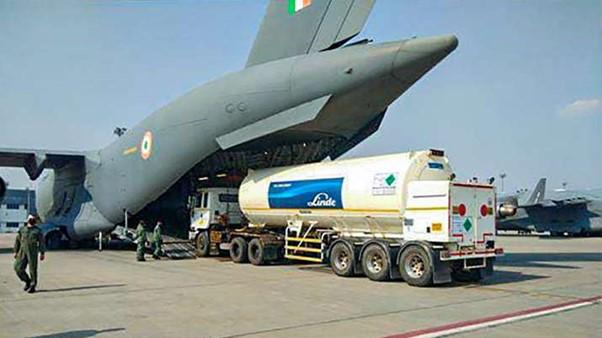
Amid worsening Covid-19 situation, the government has roped in the Indian Air Force to airlift oxygen cylinders, regulators, and essential medicines. The IAF has pressed its C-17 and IL-76 aircrafts to airlifting oxygen tankers, reducing the transportation time. The C-17 Globemaster is a long-haul aircraft, capable of carrying large combat equipment, troops and humanitarian aid in all weather conditions. The IL-76 is a multi-purpose strategic airlifter, designed to deliver heavy machinery to remote and poorly served areas.
The State of the Global Climate 2020 lists the major global warming milestones
In News
The World Meteorological Organization has recently released the annual State of the Global Climate for 2020 report. The report has noted that extreme weather combined with Covid-19 was a double blow for millions of people in 2020.
About the World Meteorological Organization
- It is a specialized agency of the United Nations responsible for promoting international cooperation on atmospheric science, climatology, hydrology and geophysics.
- It originated from the International Meteorological Organization (IMO), which was established after the 1873 Vienna International Meteorological Congress.
- Headquartered in Geneva, Switzerland, the WMO is governed by the World Meteorological Congress, composed of member states, which meets every four years to set policies and priorities.
Global Climate Indicators
|
Temperature |
· The global mean temperature for 2020 was 1.2 ± 0.1 °C above the 1850–1900 baseline, which places 2020 as one of the three warmest years on record globally. · The warmest year on record to date was 2016 that was associated with a strong El Nino. |
|
Greenhouse Gases and Stratospheric Ozone |
· Emission of major greenhouse gases increased in 2019 and 2020. · The temporary reduction in emissions in 2020 related to measures taken in response to COVID-19 is likely to lead to only a slight decrease in the annual growth rate of CO2. · The 2020 Antarctic ozone hole developed early and went on to be the longest-lasting and one of the deepest ozone holes since ozone layer monitoring began 40 years ago. |
|
Cryosphere |
· In 2020, the Arctic sea-ice extent came down to second lowest on record. The 2020 minimum extent was 3.74 million square kilometre, marking only the second time (after 2012) on record that it shrank to less than 4 million sq km. · The Antarctic ice sheet has exhibited a strong mass loss trend since the late 1990s. |
|
Ocean |
· In 2019, the oceans had the highest heat content on record. In 2020, it has broken this record further. · Over 80% of the ocean area experienced at least one marine heatwave in 2020. |
|
Precipitation |
· In 2020, the El Niño–Southern Oscillation (ENSO) and the Arctic Oscillation (AO) each contributed to weather and climate events in different parts of the world. The Indian Ocean Dipole, which played a key role in the events of 2019, was near-neutral for much of 2020. |
Risks and Impacts of Climate Related Events
- Human Mobility and Displacement: Climate and weather events had major and diverse impacts on population movements and on the vulnerability of people on the move throughout 2020. Over the past decade (2010–2019), weather related events triggered an estimated 23.1 million displacements of people on average each year. 2020 also saw some of the largest wildfires on record, which led to significant displacement.
- Compounded Risk and vulnerability: Refugees, internally displaced people and migrants are often among those most vulnerable to climate and weather-related hazards. Weather hazards and human mobility may also intersect with social and political tensions and conflict. In East Africa, floods and the worst desert locust infestation in 25 years resulted in large-scale displacement.
- Impact on Food Security: After decades of decline, the recent increase in food insecurity since 2014 is being driven by conflict and economic slowdown as well as climate variability and extreme weather events. In 2020, over 50 million people were doubly hit – by climate-related disasters (floods, droughts and storms) and by the COVID-19 pandemic.
- Covid 19 impact on Humanitarian Action: Mobility restrictions and economic downturns due to COVID-19 have slowed the delivery of humanitarian assistance to vulnerable people. The vulnerabilities of displaced populations, which often live in densely populated settlements, were amplified further.
|
Terms mentioned in the report · Arctic Oscillation: AO is a large-scale atmospheric pattern that influences weather throughout the northern hemisphere. The positive phase is characterized by lower-than-average air pressure over the Arctic and higher-than-average pressure over the northern Pacific and Atlantic Oceans. · Indian Ocean Dipole: IOD is an irregular oscillation of sea surface temperatures in which the western Indian Ocean becomes alternately warmer (positive phase) and then colder (negative phase) than the eastern part of the ocean. · El Nino-Southern Oscillation: El Nino, characterized by higher-than-average sea-surface temperatures in the eastern Pacific and a weakening of the trade winds, typically has a warming influence on global temperatures. · Cryosphere: The cryosphere is an all-encompassing term for those portions of Earth's surface where water is in solid form, including sea ice, lake ice, river ice, snow cover, glaciers, ice caps, ice sheets, and frozen ground. · Ocean heat content: It is a term for the energy absorbed by the ocean, which is stored as internal energy. Changes in the ocean heat content play an important role in the sea level rise, because of thermal expansion. Marine heatwave: A marine heatwave is a short period of abnormally high temperatures in a sea or ocean. Marine heatwaves are caused by a variety of factors and have been associated with severe biodiversity changes such as toxic algal blooms. |
Sources:
http://www.indiaenvironmentportal.org.in/files/file/state%20of%20the%20global%20climate%202020.pdf
https://www.downtoearth.org.in/news/climate-change/the-world-was-in-high-fever-in-2020-76586
Boao Forum for Asia (BFA)
- Context: Annual conference held.
- TheBoao Forum for Asia (BFA) is an international not-for-profit organization which was jointly initiated by 26 member countries in 2001 with the purpose of promoting and deepening economic exchange, coordination, and cooperation within Asia and between Asia and other parts of the world.
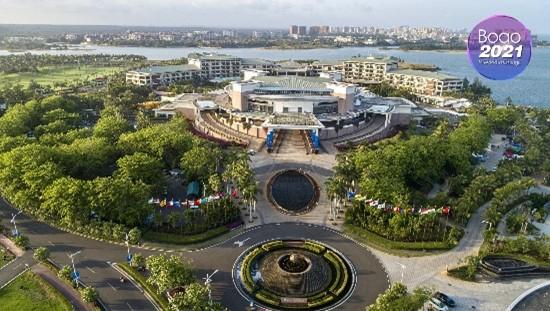
- BFA’sfive focal areas include technology innovation, health, education, culture, and media in response to the new economy.
- Its annual conferenceis held in Boao, Hainan province, China. It has also earned the name ‘Davos of the East’ as it is modelled on the lines of the Davos-based World Economic Forum.
- Indiais a member of the BFA.
Primary source: https://aric.adb.org/initiative/boao-forum-for-asia
Codex Alimentarius Commission (CAC)
• Context: Recently, the Food Safety and Standards Authority of India (FSSAI) inaugurated the fifth session of the Codex Committee on Spices and Culinary Herbs (CCSCH) established under Codex Alimentarius Commission (CAC).
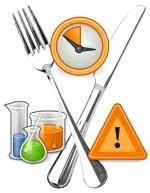
• Codex Alimentarius Commission (CAC) is an intergovernmental body which aims to protect the health of food consumers and ensure fair practices in food trade.
• It was established jointly by the UN’s Food and Agriculture Organization (FAO) and the World Health Organization (WHO) and has its secretariat located at Rome. Currently, it has 189 members, India being one of them.
• Codex Alimentarius or “Food code” is a collection of international food standards, guidelines, and codes of practice that relate to food production, its labeling and safety.
Primary source: https://pib.gov.in/PressReleaseIframePage.aspx?PRID=1713213
Blue Nature Alliance
- Context: Blue Nature Alliance will expand and improve conservation of ocean ecosystems
- Blue Nature Alliance is a collaboration between Conservation International, Global Environment Facility and other environmental and social non-profits organizations.
- It aims to protect and restore 5% of the world’s oceans in next 5 years with a focus on working alongside indigenous people, local communities, scientists, academia, and other partners.
- Efforts from the Blue Nature Alliance will contribute towards a global conservation initiative to protect at least 30% of the ocean by 2030.

Primary source: https://edition.cnn.com/2021/04/20/world/blue-nature-alliance-ocean-cte-spc-intl-scn/index.html
Reforms must extend to making available the best technologies to farmers - IE
Essence - The potential of genetic engineering is immense, with gene editing opening up the possibility of cures to hereditary diseases. Similarly, genetically modified (GM) crops are making big strides in bringing about improvement in crop productivity across farming nations. In this context, this article makes a case for transforming Indian agriculture into precision agriculture by using modern tools of biotechnology.
Why you should read this article?
- Know about the status and trends of biotech crops at global scale and their benefits.
- Have an overview of the current status of GM cotton, Bt brinjal and GM mustard in India.
- Understand the reasons as to why apart from reforms in the market and supply chain, there is an urgent need to make available the best technologies to our farmers.
Link - https://indianexpress.com/article/opinion/columns/biotechnology-farming-india-7280709/
On India, the contestation within Pakistan’s army - HT
Essence - In this editorial, Mr. Vivek Katju, a retired diplomat who has dealt extensively with Pakistan, expresses his doubts about the India-Pakistan relationship curve due to internal fissures in the Pakistani establishment.
The February 25 joint statement to cease fire on the Line of Control (LOC), Pak Army Chief General Bajwa & PM Imran Khan’s comment were seen as indicative of a shift in its strategic doctrine relating to India. However, these “positive developments” cannot be taken, though, as indicative of the relationship turning a corner — due to the approach of Qureshi and some other important leaders of the ruling Pakistan Tehreek-e-Insaf (PTI) party. Qureshi said that Pakistan’s greatest achievement in the last two years has been to defeat India’s design to diplomatically isolate Pakistan. He went on to assert that Pakistan was able to expose India’s smear campaign. These are not helpful words for the India-Pakistan process underway. Thus, the future of the current initiatives will depend on whether Bajwa succeeds in fostering a consensus on the India policy among the generals.
Why you should read this article?
- To gain a better understanding of the various viewpoints on recent developments in India-Pakistan power circles for the normalisation of ties and border agreements.
- To learn more about Pakistan's military doctrine of using terror against India, as well as signs of a transition.
- To comprehend the constraints that a foresighted leadership in Pakistan faces, causing the solution process to veer off course.
Migration Card: Tracking and educating migrant children in Gujarat Education
Present Situation
- The Right of Children to Free and Compulsory Education Act, 2009 envisages free elementary education for children in the age group of 6-14 years.
- However, there are implementation hurdles like poor enrolment high dropout rates among students due to high migration for seasonal employment.
- While the academic year is from June-April, migration for seasonal employment usually occurs in the months of September-November up to May-June. Therefore, children of parents who have to migrate due to employment needs are often uprooted in the middle of the academic
Innovative Example: Migration Card in Gujarat
- Migration Card helped in tracking inter-state and intra-state migration of school-going children
- The card has been synced with Migration Monitoring Software which enables tracking in real time.
- The card and software was synced with Sarva Shiksha Abhiyan in Gujarat, which has used this software successfully to accommodate migrant children in seasonal hostels and in Tent Special Training Programmes.
Outcomes
- It has increased retention under elementary education of children who migrate with parents looking for seasonal employment
- It has reduced the drop-out rates of girls from the primary education.
- It has helped in implementation of Right of Children to Free and Compulsory Education Act not only in letter but also in spirit.
- The learning outcome has improved of the state and has helped in empowerment of the poorest and most vulnerable section.
Where can this case study be used?
Innovative example of using technology to solve social issues, best practice across the states to improve education and learning outcome, Examples to accommodate the differential needs of the migrants.
Share the article
Get Latest Updates on Offers, Event dates, and free Mentorship sessions.

Get in touch with our Expert Academic Counsellors 👋
FAQs
UPSC Daily Current Affairs focuses on learning current events on a daily basis. An aspirant needs to study regular and updated information about current events, news, and relevant topics that are important for UPSC aspirants. It covers national and international affairs, government policies, socio-economic issues, science and technology advancements, and more.
UPSC Daily Current Affairs provides aspirants with a concise and comprehensive overview of the latest happenings and developments across various fields. It helps aspirants stay updated with current affairs and provides them with valuable insights and analysis, which are essential for answering questions in the UPSC examinations. It enhances their knowledge, analytical skills, and ability to connect current affairs with the UPSC syllabus.
UPSC Daily Current Affairs covers a wide range of topics, including politics, economics, science and technology, environment, social issues, governance, international relations, and more. It offers news summaries, in-depth analyses, editorials, opinion pieces, and relevant study materials. It also provides practice questions and quizzes to help aspirants test their understanding of current affairs.
Edukemy's UPSC Daily Current Affairs can be accessed through:
- UPSC Daily Current Affairs can be accessed through Current Affairs tab at the top of the Main Page of Edukemy.
- Edukemy Mobile app: The Daily Current Affairs can also be access through Edukemy Mobile App.
- Social media: Follow Edukemy’s official social media accounts or pages that provide UPSC Daily Current Affairs updates, including Facebook, Twitter, or Telegram channels.

